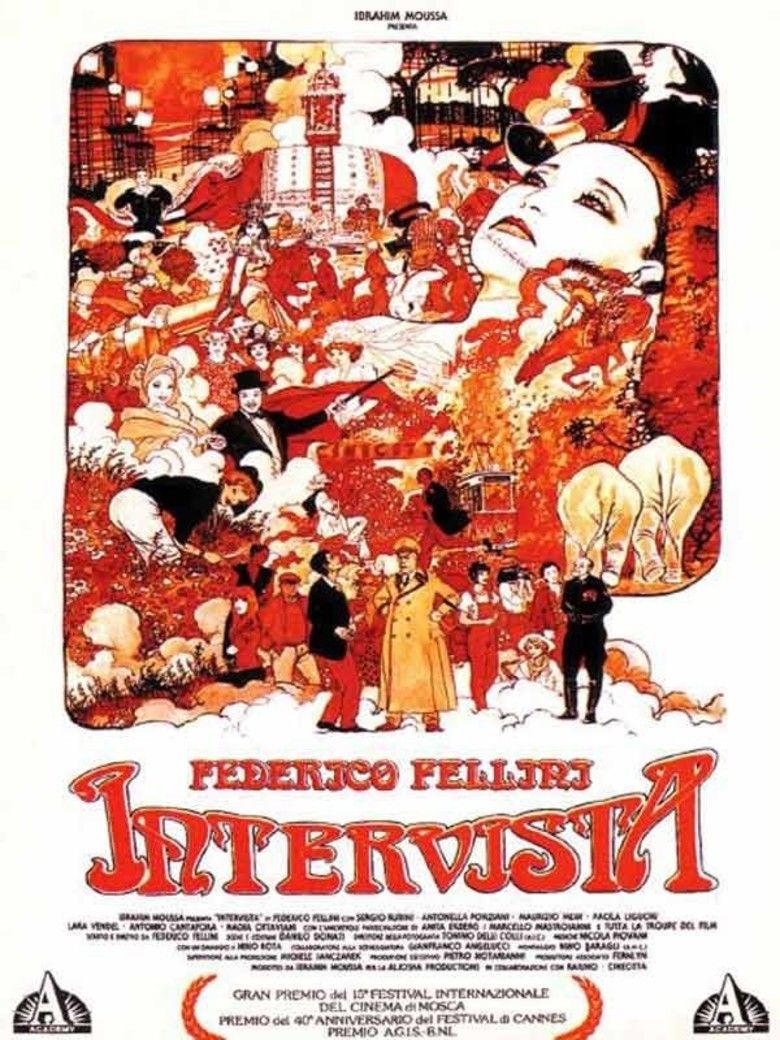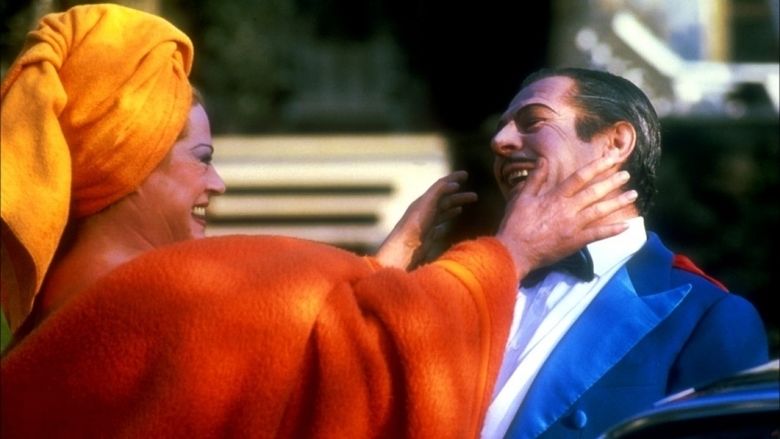Intervista
7.2 /10 1 Votes7.2
3.5/5 AlloCine Country Italy | 7.1/10 IMDb 73% Rotten Tomatoes Genre Biography, Comedy, Drama Duration Language Italian | |||||||||||||||||||||||||||||||||
 | ||||||||||||||||||||||||||||||||||
Release date 18 May 1987 (1987-05-18) (Cannes)28 September 1987 (1987-09-28) (Italy) Writer Federico Fellini (story), Gianfranco Angelucci (contributing writer), Federico Fellini (screenplay) Initial release September 28, 1987 (Italy) Screenplay Federico Fellini, Gianfranco Angelucci Cast (Himself), (Reporter, himself), (Antonella), Maurizio Mein (Himself), Paola Liguori (Star), (Herself)Similar movies Related Federico Fellini movies | ||||||||||||||||||||||||||||||||||
Intervista federico fellini
Intervista (English: Interview) is a 1987 Italian film directed by Federico Fellini.
Contents
- Intervista federico fellini
- Renato zero intervista 1987
- Plot
- Main
- Supporting
- CameoUncredited
- Structure
- Awards
- References

Renato zero intervista 1987
Plot
Interviewed by a Japanese TV crew for a news report on his latest film, Fellini takes the viewer behind the scenes at Cinecittà. A nighttime set is prepared for a sequence that Fellini defines as “the prisoner’s dream” in which his hands grope for a way out of a dark tunnel. With advancing age and weight, Fellini is finding it difficult to escape by simply flying away but when he does, he contemplates Cinecittà from a great height.
The next morning, Fellini accompanies the Japanese TV crew on a brief tour of the studios. As they walk past absurd TV commercials in production, Fellini’s casting director presents him with four young actors she’s found to interpret Karl Rossmann, the leading role in the maestro's film version of Kafka’s Amerika. Fellini introduces the Japanese to the female custodian of Cinecittà (Nadia Ottaviani) but she succeeds in putting off the interview by disappearing into the deserted backlot of Studio 5 to gather dandelions to make herbal tea. Meanwhile, Fellini’s assistant director (Maurizio Mein) is on location with other crew members at the Casa del Passeggero, a once cheap hotel now converted into a drugstore. Fellini wants to include it in his film about the first time he visited Cinecittà as a journalist in 1938 during the Fascist era. Past and present intermingle as Fellini interacts with his younger self played by aspiring actor, Sergio Rubini. After the crew reconstruct the facade of the Casa del Passeggero elsewhere in Rome, a fake tramway takes young Fellini/Rubini from America’s Far West with Indian warriors on a clifftop to a herd of wild elephants off the coast of Ethiopia. Arriving at Cinecittà, he sets off to interview matinee idol, Greta Gonda.
Seamlessly, the illusion takes over the realities of moviemaking as the viewer is thrown into two feature films being directed by tyrannical directors. But only for a short while; for the rest of the film, Fellini and his assistant director (Maurizio Mein) scramble to recruit the right cast and build the sets for the film version of Amerika, a fictitious adaptation that Fellini uses as a pretext to shoot his film-in-progress. This allows Fellini/Rubini to go back and forth in time to experience filmmaking first-hand including disgruntled actors who failed their auditions, Marcello Mastroianni in a TV commercial as Mandrake the Magician, a bomb threat, a visit to Anita Ekberg’s house where she and Mastroianni re-live their La Dolce Vita scenes, screen tests of Kafka’s Brunelda caressed in a bathtub by two young men, and an inconvenient thunderstorm that heralds the production collapse of Amerika with an attack by bogus Indians on horseback wielding television antennae as spears.
Back inside Studio 5 at Cinecittà, Intervista concludes with Fellini’s voiceover, “So the movie should end here. Actually, it’s finished.” In response to producers unhappy with his gloomy endings, the Maestro ironically offers them a ray of sunshine by lighting an arc lamp.
Main
Supporting
Cameo/Uncredited
Structure
Blurring the line between documentary and fiction, Intervista threads four films into one or a film-within-four-films:
Film 1 is a television news report: Japanese journalists arrive on the set to interview Fellini and his crew preparing sets, location scouting, searching for actors, inspecting photographs, and shooting screen tests. Fellini, Anita Ekberg and Marcello Mastroianni appear as themselves.Film 2 is filmed autobiography: while interviewed by the Japanese, Fellini evokes memories (real or invented) of his first visit to Cinecittà in 1938 as a young journalist commissioned to interview a female matinee idol.Film 3 is the making of a non-existent movie at Cinecittà, an adaptation of Kafka's Amerika.Film 4 is the movie itself: Intervista subsumes all three films, making them cohere into the Maestro’s portrait of himself and cinema.Awards
References
Intervista WikipediaIntervista IMDbIntervista AlloCineIntervista Rotten TomatoesIntervista themoviedb.org
